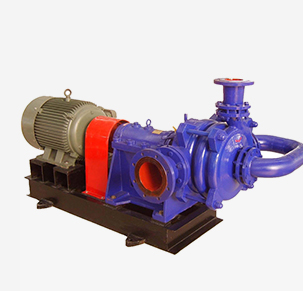English
- Afrikaans
- Albanian
- Amharic
- Arabic
- Armenian
- Azerbaijani
- Basque
- Belarusian
- Bengali
- Bosnian
- Bulgarian
- Catalan
- Cebuano
- Corsican
- Croatian
- Czech
- Danish
- Dutch
- English
- Esperanto
- Estonian
- Finnish
- French
- Frisian
- Galician
- Georgian
- German
- Greek
- Gujarati
- Haitian Creole
- hausa
- hawaiian
- Hebrew
- Hindi
- Miao
- Hungarian
- Icelandic
- igbo
- Indonesian
- irish
- Italian
- Japanese
- Javanese
- Kannada
- kazakh
- Khmer
- Rwandese
- Korean
- Kurdish
- Kyrgyz
- Lao
- Latin
- Latvian
- Lithuanian
- Luxembourgish
- Macedonian
- Malgashi
- Malay
- Malayalam
- Maltese
- Maori
- Marathi
- Mongolian
- Myanmar
- Nepali
- Norwegian
- Norwegian
- Occitan
- Pashto
- Persian
- Polish
- Portuguese
- Punjabi
- Romanian
- Russian
- Samoan
- Scottish Gaelic
- Serbian
- Sesotho
- Shona
- Sindhi
- Sinhala
- Slovak
- Slovenian
- Somali
- Spanish
- Sundanese
- Swahili
- Swedish
- Tagalog
- Tajik
- Tamil
- Tatar
- Telugu
- Thai
- Turkish
- Turkmen
- Ukrainian
- Urdu
- Uighur
- Uzbek
- Vietnamese
- Welsh
- Bantu
- Yiddish
- Yoruba
- Zulu
Telephone: +86 13120555503
Email: frank@cypump.com
Sep . 28, 2024 13:54 Back to list
single suction vs double suction pump
Single Suction vs. Double Suction Pumps A Comparative Analysis
In the realm of fluid mechanics and mechanical engineering, pumps play a crucial role in various applications, ranging from industrial processes to municipal water supply systems. Two common types of centrifugal pumps are single suction and double suction pumps. Each design serves specific purposes and has distinct advantages and disadvantages.
Single Suction Pumps
Single suction pumps, also known as single suction centrifugal pumps, draw fluid into the impeller from a single inlet. These pumps are typically simpler in design and construction, featuring fewer components, which can lead to lower manufacturing and maintenance costs. Single suction pumps are well-suited for applications that require moderate flow rates and pressures. However, they can be less efficient when dealing with higher flow rates, as the axial hydraulic thrust can lead to increased wear and tear on the components, limiting their operational lifespan.
Double Suction Pumps
On the other hand, double suction pumps are designed with two inlets for fluid entry, allowing for a more balanced loading on the impeller. This design significantly reduces the axial thrust, enhancing the pump's efficiency and longevity. Double suction pumps are ideal for high-capacity applications, such as water supply in large municipal systems or significant industrial operations. Although these pumps are typically more complex and costly to manufacture and maintain, their efficiency and durability make them a preferred choice for demanding scenarios.
single suction vs double suction pump

Key Comparisons
When comparing single suction and double suction pumps, several factors must be considered
1. Efficiency Double suction pumps generally operate more efficiently at high flow rates due to reduced axial thrust. Conversely, single suction pumps may suffice for lower flow requirements. 2. Maintenance Single suction pumps tend to have lower maintenance needs, thanks to their simpler design, making them more economical for smaller operations. In contrast, double suction pumps, while requiring more upkeep, provide long-term savings through their durability.
3. Applications The choice between the two types often comes down to the specific application. Single suction pumps are commonly used in smaller systems, while double suction pumps are better for larger-scale operations.
Conclusion
In conclusion, the choice between single suction and double suction pumps greatly depends on the application requirements, budgetary constraints, and operational goals. Understanding the strengths and limitations of each type enables engineers and operators to make informed decisions, ensuring optimal performance in fluid handling systems. As technology continues to evolve, innovations in pump design may further enhance the effectiveness and efficiency of both types, expanding their applications across various industries.
-
ISG Series Vertical Pipeline Pump - Chi Yuan Pumps Co., LTD.|High Efficiency, Energy Saving, Low Noise
NewsJul.30,2025
-
ISG Series Vertical Pipeline Pump- Chi Yuan Pumps|High Efficiency&Low Noise
NewsJul.30,2025
-
ISG Series Vertical Pipeline Pump-Chi Yuan Pumps Co., LTD.|High Efficiency&Energy Conservation
NewsJul.30,2025
-
ISG Series Vertical Pipeline Pump - Chi Yuan Pumps Co., LTD.|Advanced Hydraulic Design&Energy-Efficient Solutions
NewsJul.30,2025
-
ISG Series Vertical Pipeline Pump - Chi Yuan Pumps Co., LTD.
NewsJul.30,2025
-
ISG Series Vertical Pipeline Pump - Chi Yuan Pumps Co., LTD.|energy-efficient fluid handling&industrial durability
NewsJul.30,2025










